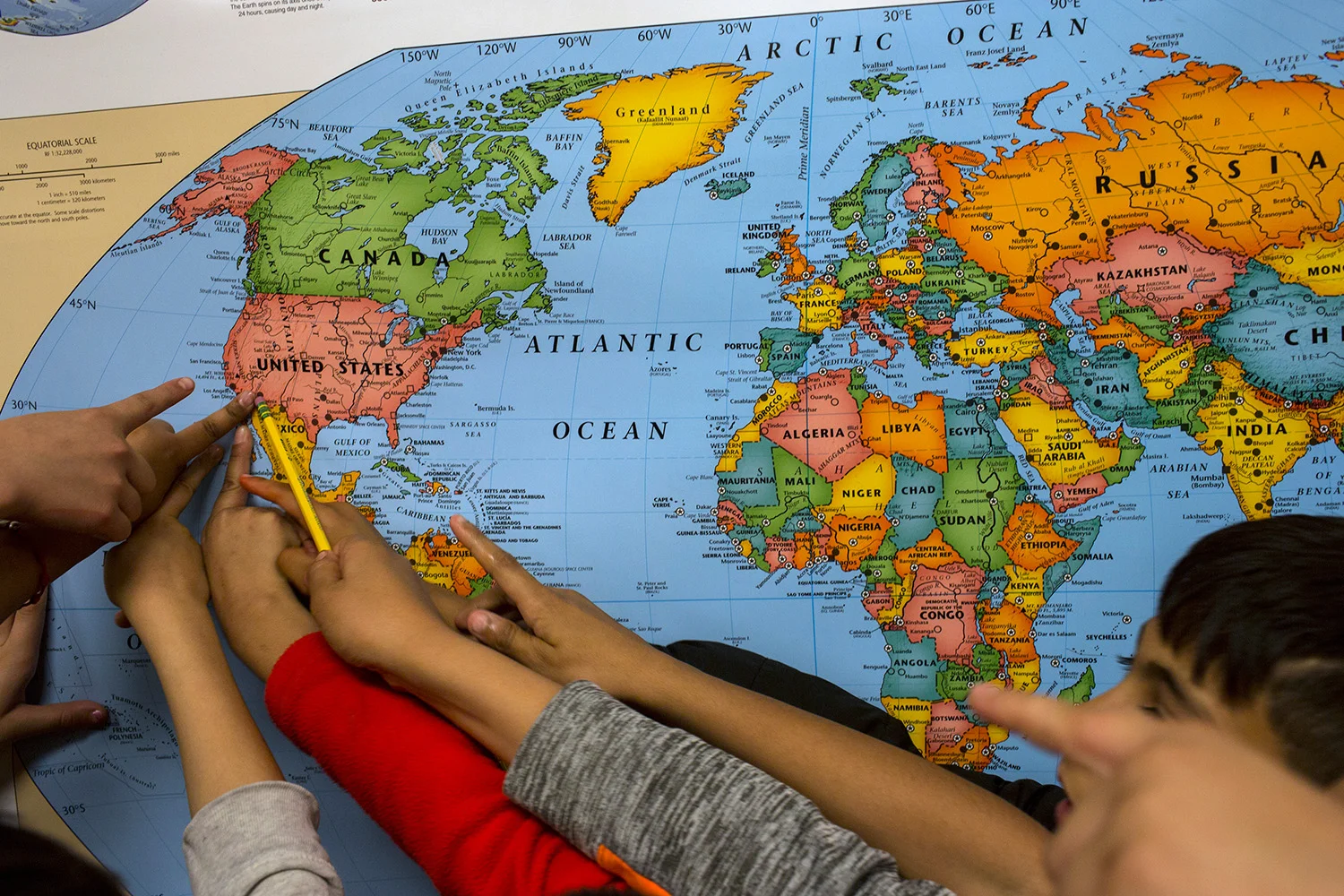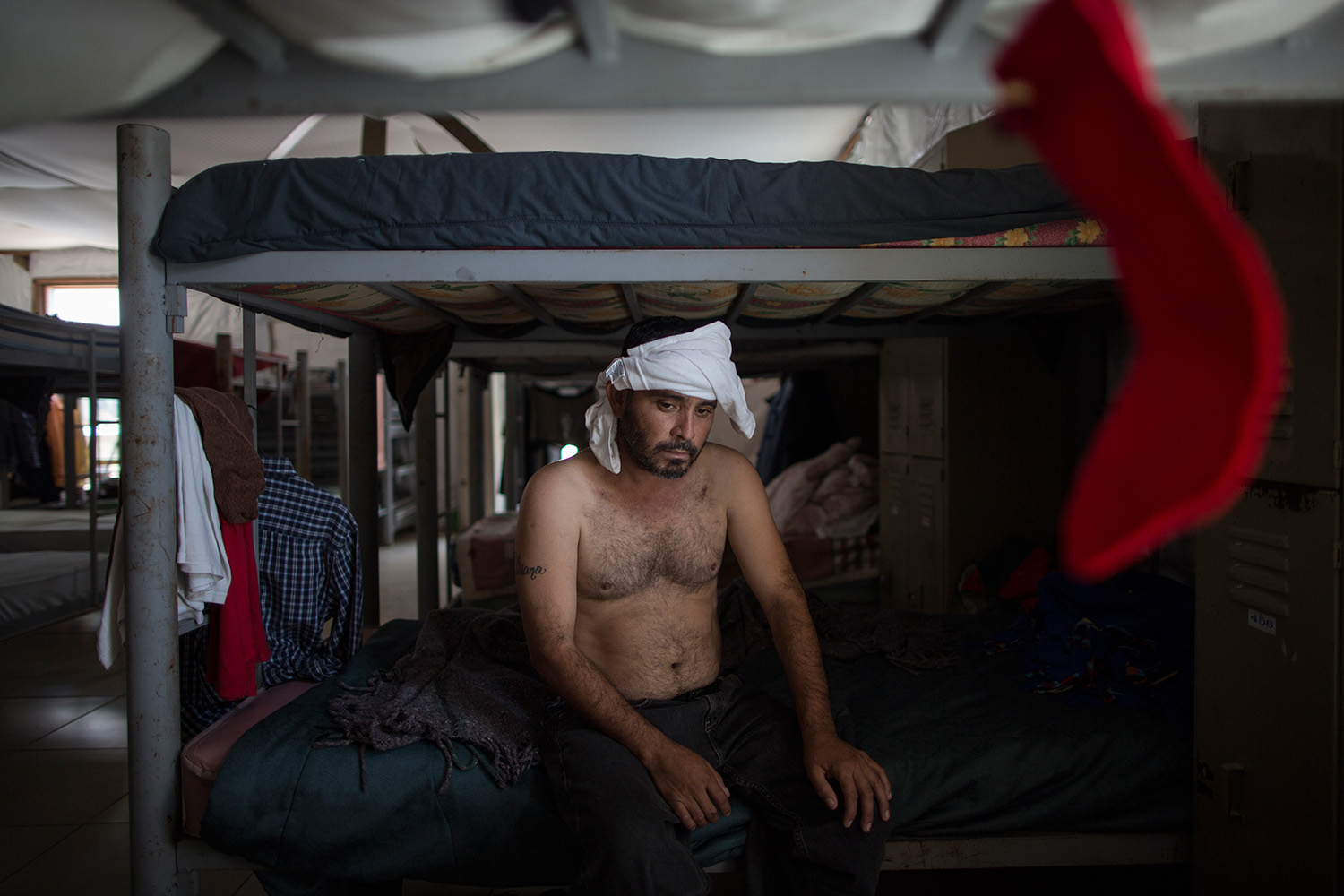Tales from the border: Day 10

Every morning about 1,200 kids in backpacks and sneakers arrive at the U.S. port of entry on the border with Puerto Palomas, Mexico, a sleepy crossing of just a couple of car lanes flanked by tall steel fencing.
They show their U.S. passport cards and sometimes answer a few questions or open their bags for inspection. Then 400 of them board yellow school buses for a 10-minute ride to Columbus Elementary in Columbus, New Mexico. The rest are bused to middle and high schools in the city of Deming, 45 minutes away.
American kids living in Mexico make up about 60 percent of Columbus Elementary’s student body. Many are the children of parents who were deported and moved here to be able to send their kids to school in the United States. Now the prospect of stricter immigration enforcement under President Donald Trump has people here wondering if the population of families with U.S.-born children could swell in Palomas and elsewhere along the border.
Columbus Elementary School students walk towards the U.S. port of entry on the border with Puerto Palomas, Mexico, after attending school in Columbus, New Mexico, Friday, March 31, 2017. (AP Photo/Rodrigo Abd)
“A lot of their situations are their parents have been deported, one of them, so they live in Mexico,” says Rachel Gomez, a 51-year-old kindergarten teacher in Columbus. “But these kids are U.S. citizens, all of them, so they have a right to a public education.”
She says the desert town just north of the border has opened its schools to American kids in Mexico at least since she attended as a child. With computers and bilingual classes, they’re an attractive option for parents who want their kids to grow up tech-savvy and fluent in English.
In Columbus Elementary, the halls echo with the children’s chatter in both Spanish and English, and bean-mosaic artworks hang on the walls. At lunchtime, students munch on the same spongy pepperoni pizza that’s served in public schools across the country.
A fifth grade student shows his geometry work to a teacher at Columbus Elementary School, in Columbus, New Mexico, Friday, March 31, 2017. (AP Photo/Rodrigo Abd)
Students interpretive drawings of "The Gum-Chewing Rattler" by Joe Hayes are displayed in the gym at Columbus Elementary School, in Columbus, New Mexico, Friday, March 31, 2017. (AP Photo/Rodrigo Abd)
Ada Noema Gonzalez drives her kids Karen and Jesus Lozano to the port of entry each day and sees them across. Precocious Karen, 9, and shy Jesus, 10, were born in the United States and raised in Palomas.
They switch back and forth effortlessly between Spanish and English, something that Gonzalez considers a blessing. The family may want to live in the United States someday, and she wants them prepared academically. And there are simply more resources at the New Mexico schools than those south of the border.
“The education that the school they attend provides is very broad,” Gonzalez says. “There are more opportunities there ... more hours of work, and I think that all favors them.”
Gonzalez has a U.S. visa so she can attend school events, but that’s not the case for many of the Mexican parents. To accommodate them, the school holds parent-teacher conferences by Skype. It also calls parents individually on days like today, when one of New Mexico’s notorious “dirt storms” has forced the school to close early.
Video: Tales from the border - Day 10
Winds are gusting to 50 mph and browning out the sky with dust. Staffers scramble to get the kids fed, notify their parents and load them onto buses home. At the border they feed their backpacks through the X-ray machine at Mexican customs and crowd around the other side to pick them up.
Gonzalez meets Karen and Jesus and walks them a block to her car, which is parked in front of the Palomas elementary school snug up against the border fence where she is a teacher. Back home, a new construction that’s spotless except for a bit of dust blowing in around the front door, the kids pet the family’s white cat. Gonzalez sits in an overstuffed chair with Karen in her lap.
“How was school today?” she asks.
A student eats a slice of pizza during a break in a fourth grade classroom at Columbus Elementary School, in Columbus, New Mexico, Friday, March 31, 2017. (AP Photo/Rodrigo Abd)
Fifth graders sit in their civics class at Columbus Elementary School, in Columbus, New Mexico, Friday, March 31, 2017. (AP Photo/Rodrigo Abd)
A woman walks with a dog during a dust storm in Palomas, Mexico, Friday, March 31, 2017. (AP Photo/Rodrigo Abd)
Students wait inside a school bus at Columbus Elementary School, in Columbus, New Mexico, Friday, March 31, 2017, to be transported to the U.S. port of entry on the border with Puerto Palomas, Mexico. (AP Photo/Rodrigo Abd)
Columbus Elementary School students walk towards the U.S. port of entry on the border with Puerto Palomas, Mexico, after attending school in Columbus, New Mexico, Friday, March 31, 2017. (AP Photo/Rodrigo Abd)
Students from Columbus Elementary School, walk next to a Mexican soldier while crossing the border from Columbus, New Mexico, US, into Palomas, Mexico, after school, Friday, March 31, 2017. (AP Photo/Rodrigo Abd)
A student raises her hand during class at Columbus Elementary School, in Columbus, New Mexico, US, Friday, March 31, 2017. (AP Photo/Rodrigo Abd)
Students line up to return to their classroom at Columbus Elementary School, in Columbus, New Mexico, US, Friday, March 31, 2017. (AP Photo/Rodrigo Abd)
A student's slice of pizza beside a notebook in a classroom at Columbus Elementary School, in Columbus, New Mexico, US, Friday, March 31, 2017. (AP Photo/Rodrigo Abd)
A student sits at her desk in a classroom at Columbus Elementary School, in Columbus, New Mexico, US, Friday, March 31, 2017. (AP Photo/Rodrigo Abd)
Students wait for the school bus home at Columbus Elementary School, in Columbus, New Mexico, US, Friday, March 31, 2017. (AP Photo/Rodrigo Abd)
Students board a school bus home at Columbus Elementary School, in Columbus, New Mexico, US, Friday, March 31, 2017. (AP Photo/Rodrigo Abd)
Students line up to return to their classroom at Columbus Elementary School, in Columbus, New Mexico, US, Friday, March 31, 2017. (AP Photo/Rodrigo Abd)
Text by Christopher Sherman & photos by Rodrigo Abd
Sherman and Abd will update their travelogue with regular text entries, photographs and videos.
Follow AP photographers on Twitter
Written content on this site is not created by the editorial department of AP, unless otherwise noted.
Visual artist and Journalist





